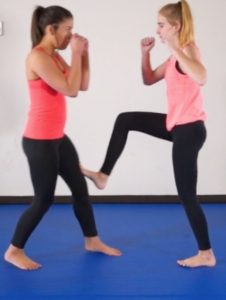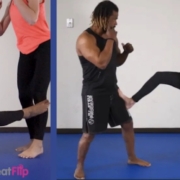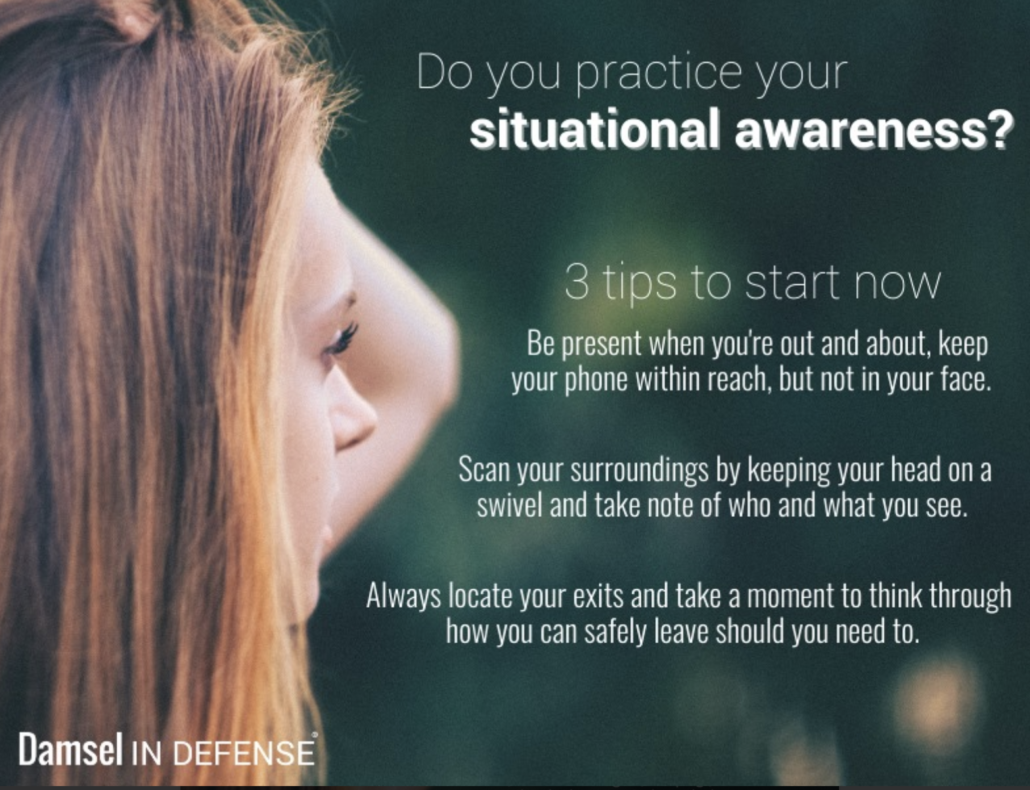No-contact safety tip #3. Manage your “social” distance.
What’s your favorite “Social Distance” sign? I live in the country so it seems to resonate with everyone out here. LOL.

Prior to the expression “social distance”, I spent a lot of time teaching girls about “distance management” and “situational awareness.” I guess if I were to offer a positive result of “social distancing” is the awareness we have regarding our surroundings. I’m still not a big fan, but let’s look at the bright side and put those social distancing skills to good use for self-defense training.
Share this activity with your daughter.
List the five senses:
1.
2.
3.
4.
5.
Answer: touch, taste, sight, smell, hearing. The senses send information to the brain to help us understand and perceive the world around us.
Discussion: Talk to your daughter about each sense and how it can help her be more aware of her surroundings.
Let’s talk about “distance management” and how it relates to self-defense.
What is “distance management?”
Answers:
- Distance management is the awareness of your personal space. Your personal space is anything inside your arm’s length.
- Distance management is the awareness of your surroundings such as people, places and situations happening around you.
- Good distance management is making sure people are outside of your arm’s length (personal space). Now, it’s six feet apart remembering health and safety for COVID-19 and other viruses.
- Good distance management is being aware of your surroundings (all around you).
Discussion:
In self-defense, I teach and drill a “distance management” game referring to two zones:
Safety Zone – Your personal space is safe. No one is inside your arm’s length which means no one can kick or strike you.
Danger Zone – Your personal space is in danger. Someone is inside your arm’s length and they have the ability to kick or strike you. Take immediate action to recover your safety zone.
List ways to escape the danger zone and re-establish your personal space aka safety zone?
- Take one or two steps back to re-establish your personal space.
- Remember to use your voice to communicate boundaries.
Activity:
Work with a partner (your training buddy). Face each other and extend your arms straight out and begin to step forward into each other’s personal space. Try and maintain your personal space by stepping backward and/or in a circular area depending on your training space.
A little “push kick” dance.
Learn the push kick and dance with your training partner
Click here for a glimpse of the training.
This skill and many others have been modified for “no-contact” training too!
If you have a membership to The Great Flip, login and look for the “no-contact” PDF and videos.
Not a member, yet? Shop the online plans here.
Talk about ways to greet each other without physical contact.
What are acceptable ways to greet each other without a handshake?
- Bump elbows
- Place your hand on your heart and slightly bow while verbally greeting your friend
- Use your Voice and say “hi” with no physical contact or gestures.
- Other ideas?
How can we show kindness to one another without physical contact?
Acts of service, Speak kind words, Compliment someone, Smile. Share ideas …
I’ll see you on the mat! – Coach Jody

Be sure to follow me on Facebook and Instagram @thegreatflip. Post your training experience and use the hashtag #thegreatflip



